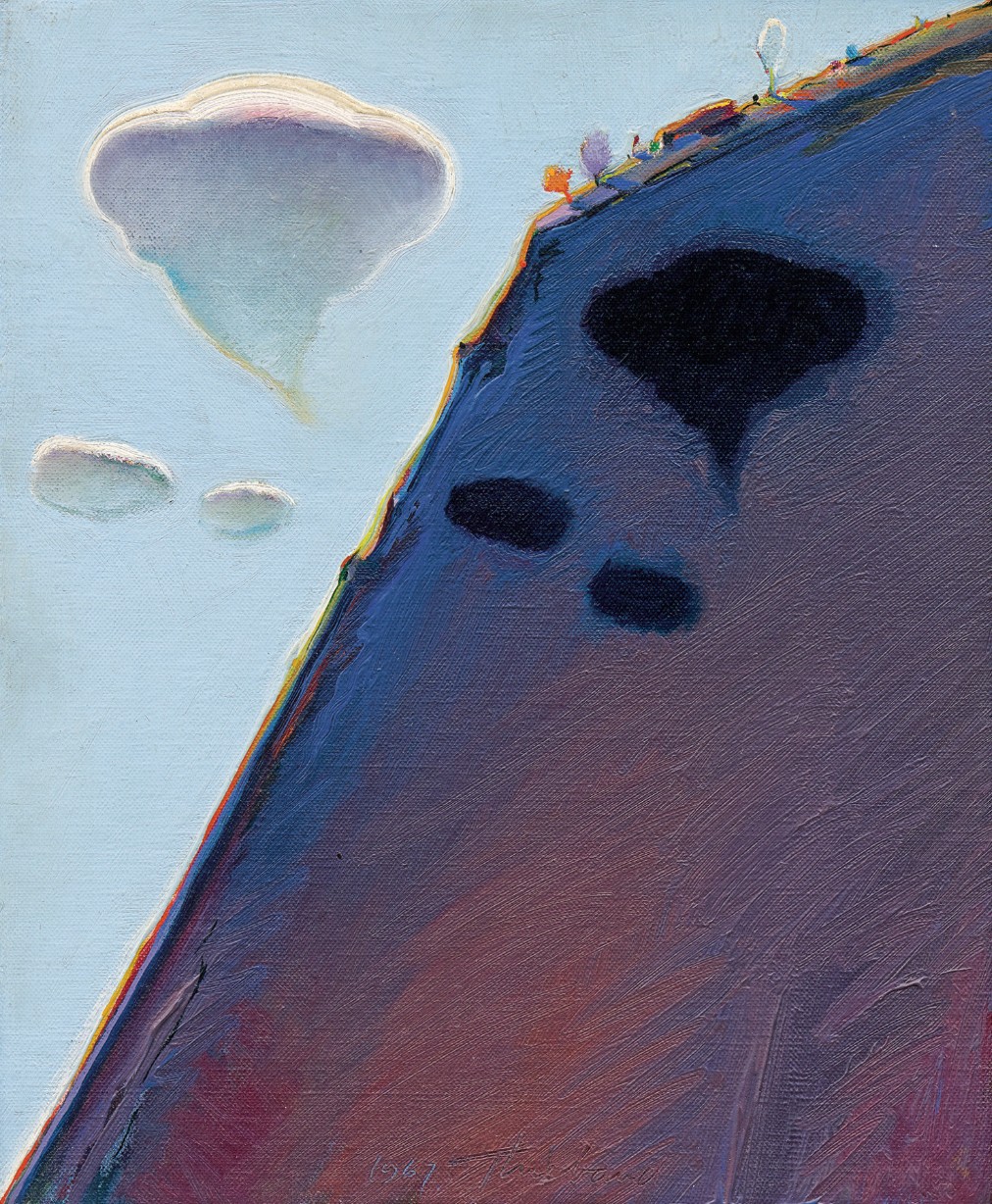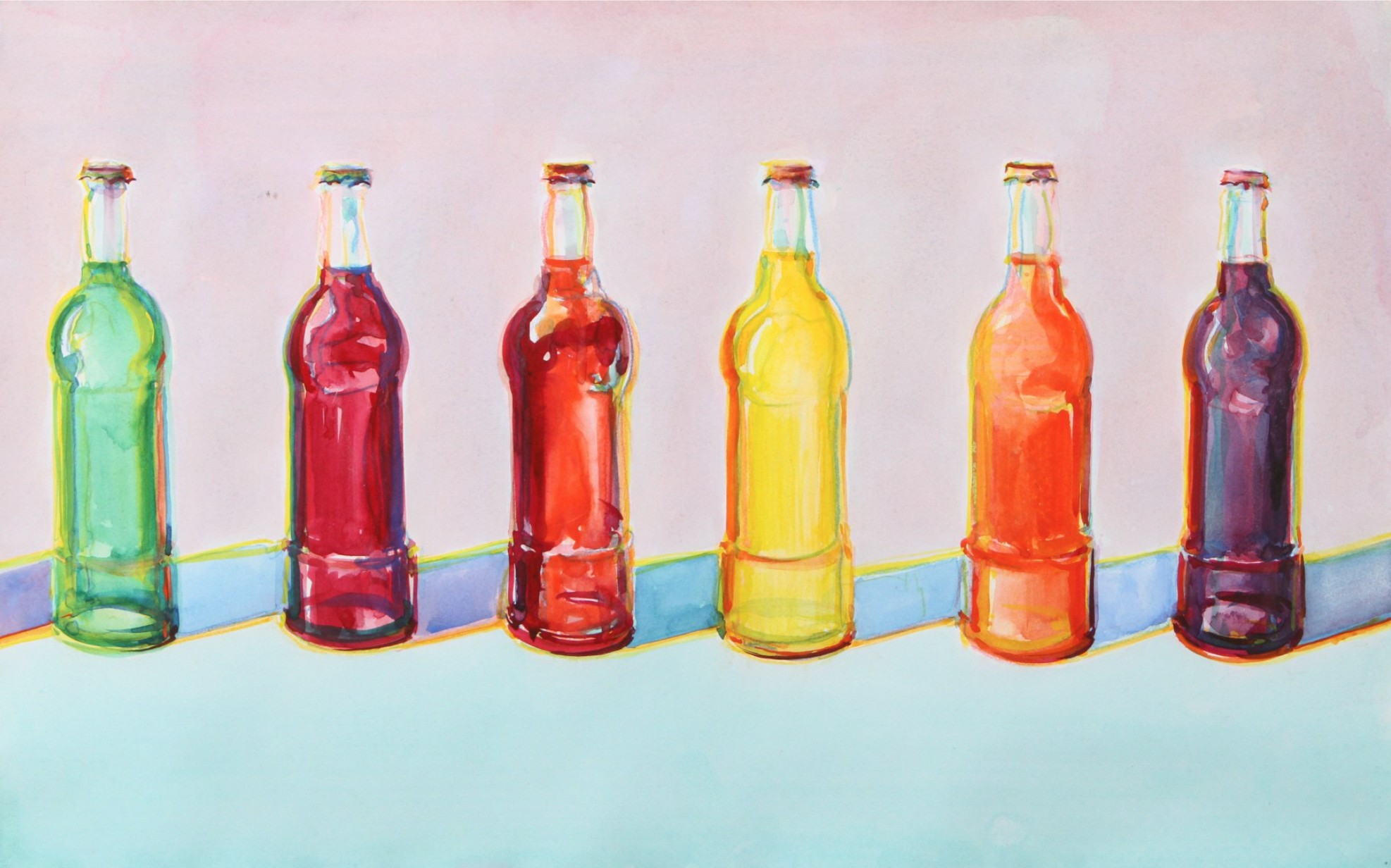Wayne Thiebaud's Colorful World
By Laura Heyrman
“I paint people, places, and things, which gives me the option of painting anything. I would like to believe I could paint anything, any day, any time, any way in which I would like to do. … for me, that’s the challenge and that’s the charge, that’s the joy and the agony.” – Wayne Thiebaud
Though he’s best known for his paintings of pies, cakes, and other foods, Wayne Thiebaud (American, 1920-2021) painted a wide variety of subjects, including portraits and other figural subjects, cityscapes, rural scenes, and mountains. The works in this Viewing Room have been chosen to give some sense of the artist’s variety of subject and to demonstrate that no matter his subject, he almost always filled his work with vivid color.
Thiebaud was born in 1920 in Mesa, Arizona but his family moved to Southern California a year later and the artist lived and worked in California for virtually his entire life. As a teenager, Thiebaud was drawn to cartooning and commercial art; he had an apprenticeship at Walt Disney Studios one summer and worked as a commercial artist both before and after his service in World War II. Encouraged by a friend, Thiebaud used the G.I. Bill to earn a B.A. and an M.A. from what is now California State University, Sacramento. In 1960, he began teaching at the University of California, Davis, where he remained until 1991. His distinguished career as a teacher didn’t end with his retirement though; as an emeritus professor, he continued offering popular painting classes.
In the early 1960s, Thiebaud began creating the colorful arrays of sweets for which he is best known. He had worked for a while at an ice cream and hot dog shop and the paintings of trays and counters of food were based on his memories of that experience as well as other encounters with delicious displays. The artist did not paint from life, but from memory, and the pastel backgrounds and intensely colored shadows in works like Confections (1962) and Untitled (Six Pop Bottles) (ca. 1985) create a nostalgia for summers past. At the same time, there is an eerie quality to Thiebaud’s closely studied parfaits, soda bottles, and slices of pie; isolated against plain backgrounds with no human presence, they seem at once desirable and unattainable. Thiebaud explained that effect by pointing out that “Common objects become strangely uncommon when removed from their context and ordinary ways of being seen.”
Thiebaud has often been discussed in the context of Pop Art, in part because his arrays of food and bright colors seem in keeping with interests of Pop artists like Andy Warhol and Ed Ruscha in commercial displays and advertising. Thiebaud was even included in some of the exhibitions that defined Pop Art in the early 1960s. However, his interests were different from the Pop artists, extending beyond the popular culture themes of the Pop movement. Thiebaud always described himself as a traditional illusionistic painter solving ordinary artistic problems of lighting, color, and composition.
In the 1970s, Thiebaud settled in San Francisco and began painting the city’s streets with exaggerated steepness. Having ridden up and down those streets, I hesitated before describing the artist's depictions as exaggerated, but even the most sloped streets in the city aren’t the pure verticals seen in works like Road Through (1983) and Steep Street (1993). The artist’s approach became less illusionistic in these cityscapes, at least with regard to perspective and point of view (or vantage point). These works remind me of Medieval and Ancient works of art in which the artists shifted their vantage points so that each object was depicted as it could be best understood.
“I'm not just interested in the pictorial aspects of the landscape - see a pretty place and try to paint it - but in some way to manage it, manipulate it, or see what I can turn it into.” – Wayne Thiebaud
A new region attracted the artist’s attention beginning in the 1980s, the fields and ponds of the Sacramento River Delta. The abstract qualities of these paintings are even more prominent than they were in the streetscapes. In Flood Waters (2006), the fields are formed from varied shapes distinguished from one another by color and texture. The mostly aerial view shifts when the artist depicts the horizon line as a conventional row of trees and buildings topped by a thin ribbon of sky. Though the palette for this painting consists mostly of blues and greens, purples, reds, oranges, and yellows appear throughout the composition.
The use of bright colors to highlight edges and patterns is characteristic of all of Thiebaud’s paintings, no matter the subject. Pie slices are edged in green, red, or blue in Pie Counter (1963); yellow, red, and blue highlight the contours of the hair and limbs of Two Kneeling Women (1966). However, it's in the landscapes that the artist’s love of color gushes forth. The mountain in Cloud Ridge (1967) blushes with red and orange while the whipped cream-like clouds shimmer with green and pink. The more closely you look, the more colors you notice as they flicker and flow through Thiebaud’s colorful world.
“Wayne Thiebaud: Summer Days” is currently on display at Acquavella Galleries, 18 East 79th Street, New York, NY, until June 14, 2024 (closed Sundays and Memorial Day weekend). LINK: acquavellagalleries.com/exhibitions/wayne-thiebaud5
Please share your comments and questions on Substack. LINK: irequireart.substack.com/p/viewing-room-20/comments
Longer captions may not be fully visible on smaller screens. We apologize for the inconvenience.
If the caption obscures part of the artwork, click on the image to turn off the caption.










